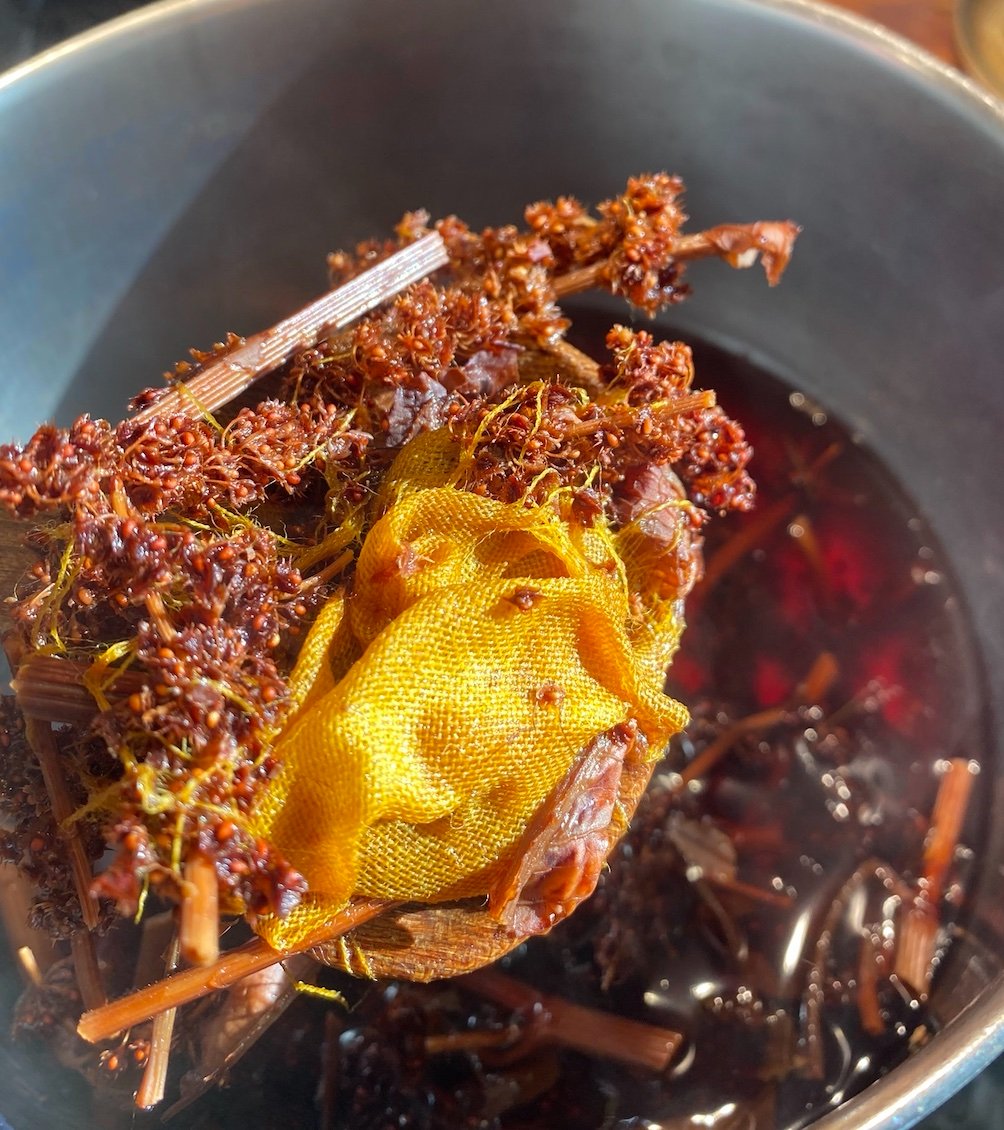
For this year’s New York Textile Month, the team at Botanical Colors talked about Invasive Plants + Color.
Invasive plants, we see them roadside, in highway medians, standing as sentries in drought-tolerant fields and abandoned lots. We call them “invasive,” adversely affecting the habitats and beneficial plants we do want to thrive. The fact is, they’re not going anywhere so what if we worked with them to create color on textiles? Join the Botanical Colors team as they take you through a visual journey from Seattle to Cape Cod to share experiences and recent color journeys with this type of natural dyeing.
Watch the video recording here.
Links for people we talked about today:
Artist, designer and educator Sasha Duerr
Anita Cazzola and the Botanical Reclamation Project
Social Artist + Activist Ellie Irons Feral and Invasive Pigments Project
Wild Textiles author and artist Alice Fox
Textile and natural dye artist Brece Honeycutt
About Botanical Colors:
Seattle-based Botanical Colors is led by Founder Kathy Hattori. We sell natural dyes from U.S. as well as international sources to artisans seeking the beauty of a sustainable, natural color palette. Along with our beautiful natural dyes, we offer production dyeing for brands large and small, and partner with other dye studios worldwide. We also offer consulting from farm to finished product and fully support the reshoring movement to bring textile jobs back to the U.S.
About NYTM:
A MANIFESTO
BY NYTM Founder LIDEWIJ EDELKOORT
Today the world of art and design is confronted with a debilitating lack of knowledge concerning textiles. Architects, artists and industrial designers as well as fashion designers no longer know the materials they work with each day of their careers.At a time when textile heritage is at a crossroads and centuries of tradition and knowledge are being compromised, the need arises to protect these endangered species in the same way we have come to defend our animal friends in the natural world; therefore we urgently need to discuss and talk about textiles again.
At this time of decline we simultaneously experience a return of the interest in textiles and their cultural expressions. Fashion design starts to focus on fabric, interior design brings back upholstery and art students reach out the loom. There is a renewed interest in material processes and an urgency to understand what fabric is made of. In the USA the production of textiles has long been lost but begins to make a timid come-back, crafting and producing all American products with local yarns and fibers; weaving the weft of tradition with the warp of innovation. Production is being brought to our doorsteps, as high-tech developments promise a dramatic new way of producing bio fiber and smart matter.
To investigate and celebrate the survival of the different textile components and expressions NYTM will draft a calendar that scripts all events, talks, walks, demonstrations and exhibitions concerning cloth, helping the general public to better comprehend and embrace the textiles of life.
-Lidewij Edelkoort
